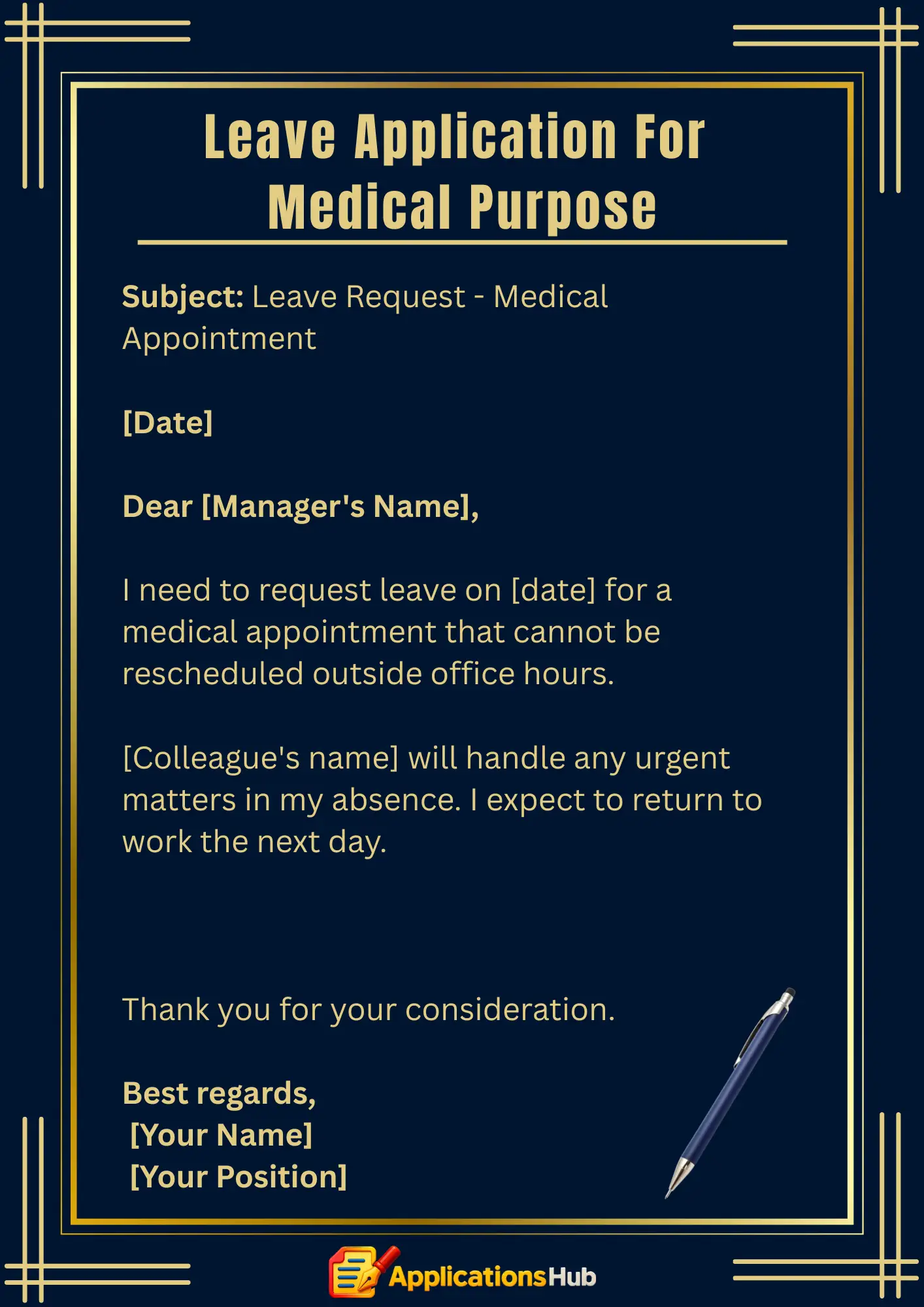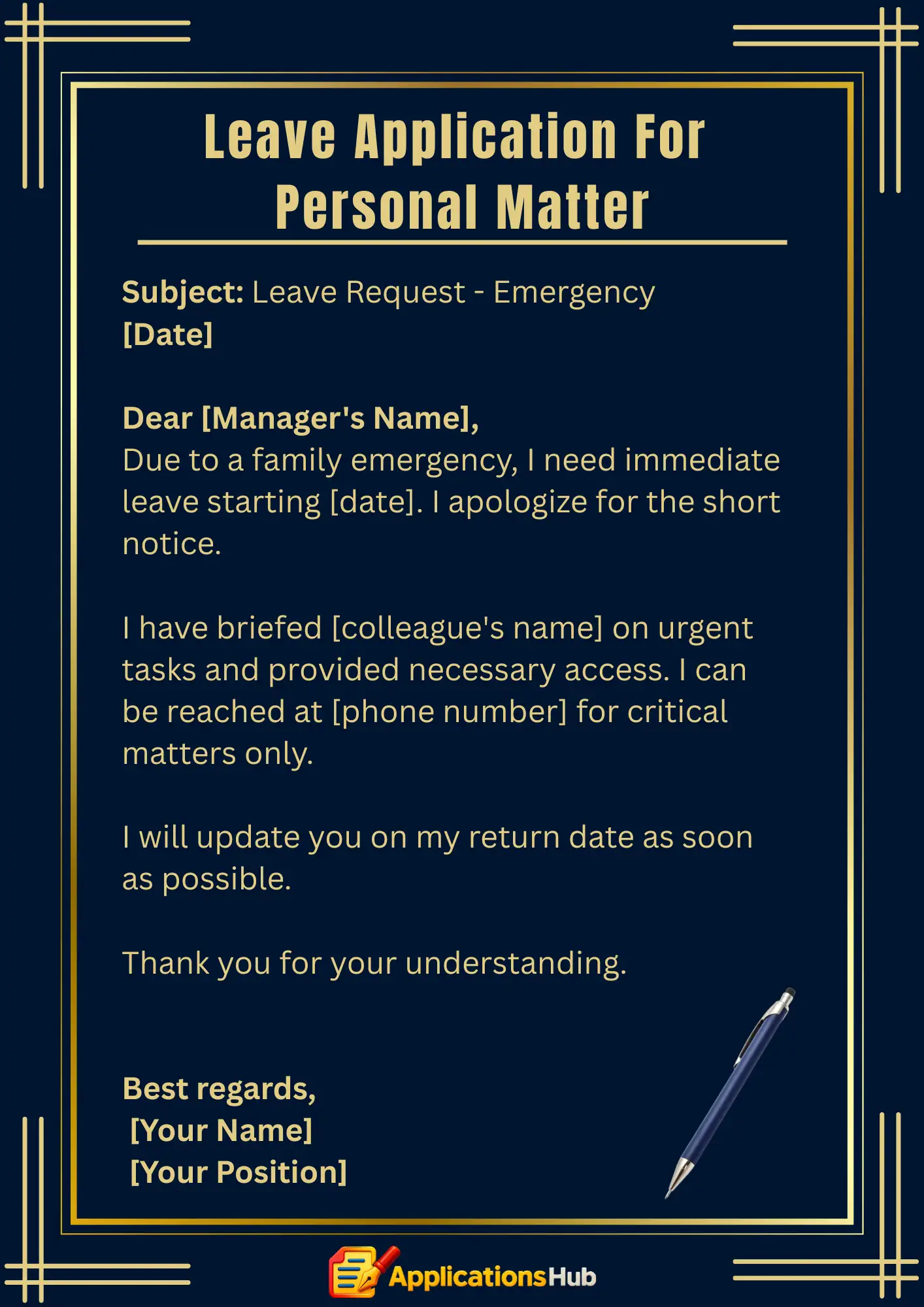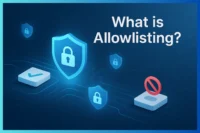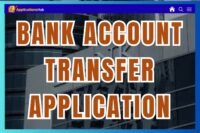How to Write a Professional Leave Application For the Office: Complete Guide with Templates
Published: 14 Aug 2025
Learn to write practical leave applications with our quick guide, featuring templates and tips for success. A well-crafted request can enhance your chances of prompt approval while maintaining good workplace relations. Avoid common pitfalls like being too casual or overly detailed. This guide will help you create professional applications that get results.
Understanding Leave Applications in the Modern Workplace
A leave application is a formal request from an employee to an employer for authorized time away from work duties. In today’s fast-paced business environment, proper leave requests are essential for maintaining operational continuity and professional standards.
The digital transformation of workplaces has changed how we submit these requests, moving from traditional paper forms to email communications and specialized HR platforms. However, the fundamental principles of transparent and respectful communication remain unchanged.
Why Proper Leave Applications Matter
Submitting professional leave requests shows respect for workplace protocols and assists managers in planning effectively for your absence. It creates a documented record for HR purposes and ensures a smooth workflow transition.
Key benefits include:
- Operational Planning: Enables supervisors to arrange coverage and redistribute responsibilities
- Professional Image: Showcases your commitment to workplace standards and team coordination
- Legal Protection: Provides documented proof of authorized absence for employment records
- Team Harmony: Prevents confusion and last-minute scrambling among colleagues
Essential Components of Effective Leave Applications
Every effective leave request includes key elements that provide essential information while maintaining a professional tone. Recognizing these components helps ensure your application contains all necessary details without added complexity.
Core Elements to Include
- Header Information: Begin with proper recipient details, including the manager’s name, department, and submission date. This establishes clear communication channels from the start.
- Clear Subject Line: Specify the purpose immediately – “Leave Request for [Date]” or “Vacation Application – [Duration]” helps recipients prioritize and file your request appropriately.
- Specific Dates: Include exact start and end dates, total number of days, and any relevant timing considerations that might affect approval.
- Concise Reasoning: Provide a brief, appropriate explanation without oversharing personal details. Medical appointments, family obligations, or personal matters are sufficient descriptions.
- Coverage Arrangements: Demonstrate responsibility by outlining how your duties will be handled during absence, whether through colleague assistance or preparation.
- Contact Information: Specify your availability level during leave – completely unavailable for emergencies only, or accessible for urgent matters via specific channels.
Step-by-Step Application Writing Process
Writing a practical leave application follows a logical sequence that ensures completeness while remaining concise. This organized approach helps to present your thoughts and information professionally.
Phase 1: Preparation and Planning
Before writing your leave request, gather essential information, including the dates you need off, your company’s policies regarding notice periods, and any current project deadlines that may be affected. Review your employee handbook for particular requirements or approval workflows.
Carefully consider the timing of your request; avoid asking for leave during known busy periods unless necessary. Whenever possible, provide as much advance notice as you can.
Phase 2: Drafting Your Request
- Opening Protocol: Address your immediate supervisor or designated authority using appropriate titles. “Dear [Manager’s Name]” works for most workplace relationships, while “Respected Sir/Madam” suits more formal environments.
- Purpose Statement: Lead with a clear, direct statement of your request. “I am writing to formally request leave from [start date] to [end date] for [brief reason].”
- Supporting Details: Expand on timing, duration, and any special circumstances without excessive elaboration. Two to three sentences typically suffice for most situations.
- Responsibility Management: Outline your plan for handling current projects, including delegation arrangements, deadline adjustments, or advance completion strategies.
Phase 3: Professional Conclusion
- Appreciation: Express gratitude for consideration and acknowledge any inconvenience your absence might cause. This demonstrates awareness of team impact.
- Availability Statement: Clarify your accessibility during leave – whether you’ll be completely unreachable or available for genuine emergencies.
- Formal Closing: Use standard business closings like “Sincerely,” “Best regards,” or “Respectfully yours”, followed by your full name and position title.
Sample Templates for Different Scenarios
Template 1: One Day Personal Leave Application
To:
[Manager’s Name]
[Department]
[Company Name]
Subject: Personal Leave Request for One day
Date: [Current Date]
Dear [Manager’s Name],
I am writing to formally request one day of leave on [specific date] due to an important personal matter that requires my immediate attention.
I have ensured that all my current assignments are up to date, and I have coordinated with [colleague’s name] to handle any urgent matters that may arise during my absence. All pending tasks scheduled for completion will be addressed before my leave date.
I will be available on my mobile phone for any critical issues that may require my immediate input. I plan to resume my regular duties on [return date].
Thank you for your understanding and consideration of this request. I would be happy to provide any additional information if needed.
Best regards,
[Your Name]
[Your Position]
[Employee ID]
[Contact Number]

Template 2: Leave Application For Medical Appointment
To:
[Manager’s Name]
[Department]
[Company Name]
Subject: Medical Leave Request
Date: [Current Date]
Dear [Manager’s Name],
I am writing to request leave on [specific date] for a scheduled medical appointment that requires my presence during working hours and cannot be rescheduled to after-office time.
The appointment is scheduled for [time] and I expect to be away from the office for approximately [duration/half day/full day]. I have made arrangements to ensure that my responsibilities are covered during this time:
- All urgent tasks have been completed in advance
- [Colleague’s name] has been briefed about ongoing projects and will handle any immediate inquiries
- Important client calls scheduled for that day have been rescheduled to [alternative date]
- My email auto-reply will redirect urgent matters to [colleague’s name]
I will check my emails and messages periodically and will be available for any critical issues via phone at [contact number]. I plan to resume normal duties on [return date/next working day].
I apologize for any inconvenience this may cause and appreciate your understanding regarding this medical necessity.
Thank you for your consideration of this request.
Best regards,
[Your Name]
[Your Position]
[Employee ID]
[Contact Number]

Template 3: Emergency Half-day Leave Application
To:
[Manager’s Name]
[Department]
[Company Name]
Subject: Half Day Leave Request
Date: [Current Date]
Dear [Manager’s Name],
I would like to request half-day leave on [date] during [morning/afternoon] hours to attend to a personal matter that cannot be scheduled outside working hours.
I will be available for work during [remaining half of the day] and will ensure that all scheduled meetings and deadlines for that day are properly managed. I have already informed [relevant team members] about my partial absence.
Thank you for accommodating this request.
Best regards,
[Your Name]
[Your Position]
[Employee ID]
[Contact Number]

Digital Communication Best Practices
Modern workplaces are increasingly utilizing digital platforms for leave requests, necessitating the adaptation of traditional formats used in email, messaging apps, and HR systems.
Email Applications
Use clear and descriptive subject lines to facilitate easy sorting and quick recognition. Maintain a professional tone while keeping your messages concise and easy to scan.
Structure emails with short paragraphs and a logical flow. Include all necessary information in the initial message to avoid follow-up exchanges that can delay approval.
HR Platform Submissions
Many organizations utilize specialized software for managing leave. Becoming familiar with your company’s system requirements, including necessary fields, attachment options, and approval processes, is essential.
Make sure to fill out all required sections completely while following character limits and formatting guidelines. Save drafts so you can review them before submitting.
Common Mistakes to Avoid
Timing and Notice Issues
Submitting requests late puts unnecessary pressure on both managers and colleagues. Even in emergencies, timely communication is crucial, as soon as you can send a notification.
Neglecting to check company calendars for potential conflicts with important meetings, deadlines, or team events can lead to delays in approval or the need to reschedule requests.
Communication Problems
- Excessive Detail: Oversharing personal information makes recipients uncomfortable and extends unnecessary communication. Professional boundaries benefit everyone involved.
- Insufficient Information: Vague requests lacking specific dates or clear reasoning force managers to follow up for clarification, slowing the approval process.
- Inappropriate Tone: Overly casual language or demanding attitudes can damage professional relationships and influence approval decisions negatively.
Administrative Oversights
Forgetting to address coverage arrangements suggests poor planning and consideration for team impact. Consistently demonstrate awareness of your responsibilities.
Neglecting to follow up on pending requests appropriately can lead to misunderstandings about approval status, especially for time-sensitive situations.
Advanced Strategies for Approval Success
Building Positive Leave Request History
Regularly submitting well-written and timely requests builds credibility with management. This professional reputation often leads to quicker approvals and greater flexibility. Demonstrating reliability in coverage arrangements and following up after leave fosters trust that enhances future requests.
Strategic Timing Considerations
Recognizing your workplace’s natural rhythms can help determine the best times to make requests. While avoiding known busy periods is essential, you shouldn’t hesitate to request time off when it’s well-planned. Consider factors such as quarterly deadlines, industry cycles, and the availability of team members when planning non-emergency leave requests.
Relationship Management
Keep open communication with supervisors about upcoming personal commitments that may require leave. Early informal discussions facilitate the formal request process. Express gratitude for approved requests and commit to reducing impact through thorough preparation and reliable coverage arrangements.
Conclusion
Practical leave applications showcase professionalism and consideration. Thoughtful requests lead to smoother approvals and enhance your reputation. Practice templates to confidently request leave for planned or urgent needs.

- Be Respectful
- Stay Relevant
- Stay Positive
- True Feedback
- Encourage Discussion
- Avoid Spamming
- No Fake News
- Don't Copy-Paste
- No Personal Attacks

- Be Respectful
- Stay Relevant
- Stay Positive
- True Feedback
- Encourage Discussion
- Avoid Spamming
- No Fake News
- Don't Copy-Paste
- No Personal Attacks





